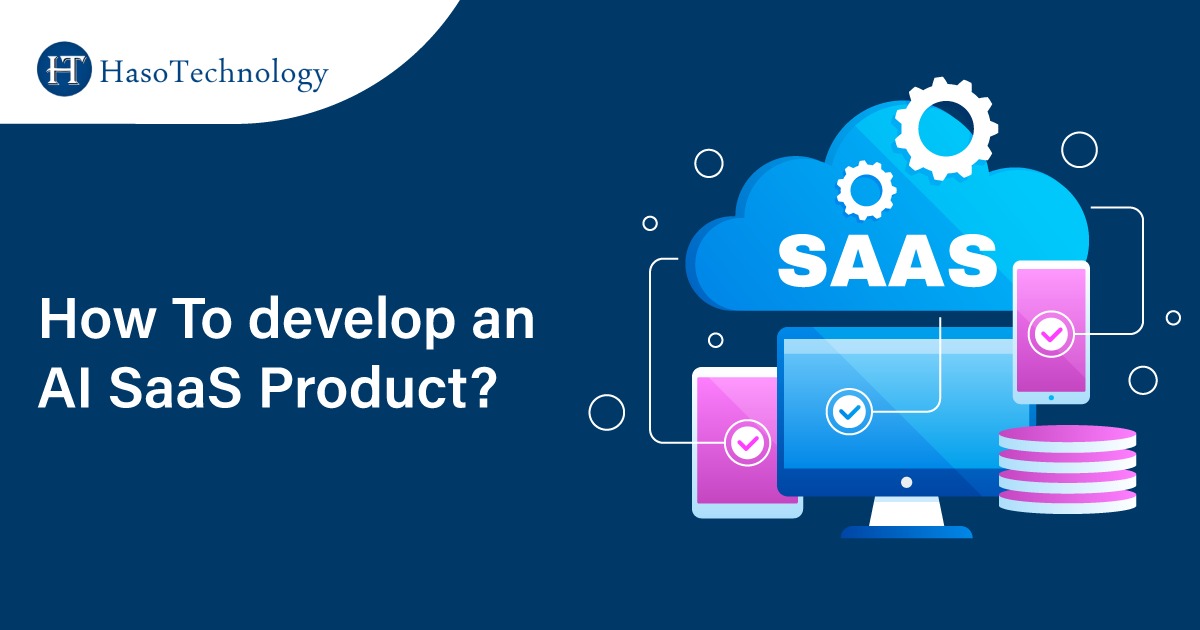Artificial Intelligence has emerged as a game-changer. It has revolutionized industries by automating tasks, predicting user behavior, and providing invaluable insights. One of the most promising applications of AI is in Software as a Service products. Developing an AI SaaS product requires careful planning, technical expertise, and a deep understanding of market dynamics. In this comprehensive guide, we will walk you through the essential steps and strategies to develop a successful AI SaaS product.
Table of Contents
- Introduction: Understanding AI SaaS Products
- Market Research and Analysis
- Defining Your AI SaaS Product
- Building the Right Team
- Data Collection and Preparation
- Choosing the Right AI Framework
- AI Model Development
- Testing and Quality Assurance
- User Interface and User Experience Design
- Security and Compliance
- Deployment and Scaling
- Customer Support and Feedback Loop
- Marketing and User Acquisition
- Monetization Strategies
- FAQs: Addressing Common Questions
- Conclusion: Your Path to AI SaaS Success
1. Introduction: Understanding AI SaaS Products
AI SaaS products combine the power of Artificial Intelligence with the convenience of cloud-based software delivery. These products are designed to solve specific problems, streamline processes, and provide data-driven insights to users. Developing an AI SaaS product requires a clear vision, technical expertise, and a deep understanding of the target market.
2. Market Research and Analysis
Before diving into development, it’s crucial to conduct thorough market research. Identify your target audience, competitors, and market trends. Understand the pain points your product can address and validate the demand for AI-powered solutions.
3. Defining Your AI SaaS Product
Clearly define the scope and features of your AI SaaS product. What problem will it solve? What are its unique selling points? Create a detailed product roadmap that outlines the development phases.
4. Building the Right Team
Assembling the right team is critical. You’ll need AI engineers, data scientists, software developers, UI/UX designers, and project managers. Collaborative teamwork is essential for success.
5. Data Collection and Preparation
Data is the lifeblood of AI. Gather high-quality data and prepare it for training your AI models. Ensure data privacy and compliance with relevant regulations.
6. Choosing the Right AI Framework
Select an AI framework that aligns with your product goals. Popular choices include TensorFlow, PyTorch, and scikit-learn. Your choice will impact the scalability and performance of your AI models.
7. AI Model Development
Develop and train your AI models based on your data. Continuously refine and optimize them for accuracy and efficiency. Consider using machine learning techniques such as supervised learning, unsupervised learning, or reinforcement learning, depending on your use case.
8. Testing and Quality Assurance
Thoroughly test your AI SaaS product to identify and fix any bugs or performance issues. Implement rigorous quality assurance processes to ensure reliability.
9. User Interface and User Experience Design
A seamless and intuitive UI/UX is crucial for user adoption. Work closely with designers to create a user-friendly interface that complements your AI capabilities.
10. Security and Compliance
Prioritize security in your product development. Implement robust security measures to protect user data and ensure compliance with data protection regulations like GDPR.
11. Deployment and Scaling
Deploy your AI SaaS product on reliable cloud infrastructure. Plan for scalability to handle increased user demand. Monitor performance and address any issues promptly.
12. Customer Support and Feedback Loop
Offer excellent customer support and establish channels for user feedback. Regularly update your product based on user suggestions and emerging trends.
13. Marketing and User Acquisition
Craft a comprehensive marketing strategy to reach your target audience. Highlight the unique benefits of your AI SaaS product. Utilize digital marketing, content marketing, and social media to generate leads.
14. Monetization Strategies
Determine your pricing model—whether it’s subscription-based, pay-per-use, or freemium. Explore partnerships and collaborations to expand your revenue streams.
Conclusion: Your Path to AI SaaS Success
Developing an AI SaaS product is a challenging but rewarding endeavor. By following the steps outlined in this guide and staying attuned to market needs, you can create a valuable solution that stands out in the competitive landscape. Remember that continuous improvement and innovation are key to long-term success in the AI SaaS industry.
In conclusion, developing an AI SaaS product requires meticulous planning, technical expertise, and a commitment to delivering value to your users. By focusing on market research, data-driven development, and user-centric design, you can position your AI SaaS product for success in a rapidly evolving digital landscape. Stay agile, adapt to changing trends, and always prioritize the needs of your users, and you’ll be well on your way to outranking the competition in the AI SaaS development industry.
FAQs: Addressing Common Questions
1: How long does it take to develop an AI SaaS product?
The development timeline can vary widely depending on complexity, team size, and resources. It can range from several months to a year or more.
2: What skills do I need to develop an AI SaaS product?
You’ll need expertise in AI, machine learning, software development, and project management. Building a diverse team with these skills is advisable.
3: How do I ensure data privacy and security?
Implement encryption, access controls, and regular security audits. Comply with relevant data protection regulations in your region.
4: Can AI SaaS products be customized for different industries?
Yes, AI SaaS products can be tailored to specific industries and use cases. Customization is a key advantage of these products.
5: What is the future of AI SaaS products?
The future looks promising, with AI SaaS products expected to continue evolving and solving complex problems across various industries.


Leave a Reply